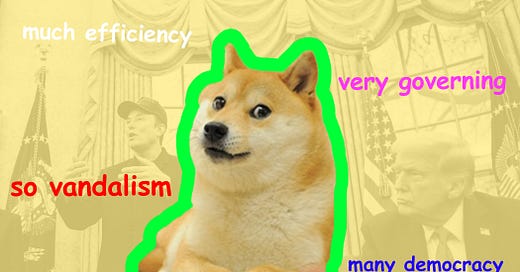‘Government Efficiency’ Is a Myth
DOGE isn’t about “efficiency.” It’s about vandalism.
Today at 1:00 p.m. EST I’m going to be live on Substack with Ben Wittes about, you know, the end of the rule of law. You should join us! I’ll send out a notice on the Substack mobile app right as we go live and we’ll post the replay on the site later.
1. Systems
Today’s edition is not urgent reading. I can save you five minutes with a TL;DR: Elon Musk’s DOGE isn’t really about “government efficiency.”
This is not news.
But I want to dig into the idea of “government efficiency”—not because it has any practical bearing on this moment, but because I find it interesting and one day, when we (or our children) are rebuilding the liberal order out of the rubble of the immediate future, it might be good to have in the back of our minds.
This is all going to be long and annoyingly theoretical, but I want to have a conversation about what “efficiency” means in the context of government and why we can’t ever really have it. This is not sexy!
But if you’re the kind of person who thinks a lot about systems, it might be interesting to you.
So let’s start with an item of dogma from the ad business:
Fifty percent of brand advertising works. The problem is that no one knows which fifty percent.
This statement is self-evidently true.1 It also happens to describe the paradox of “government efficiency.”





